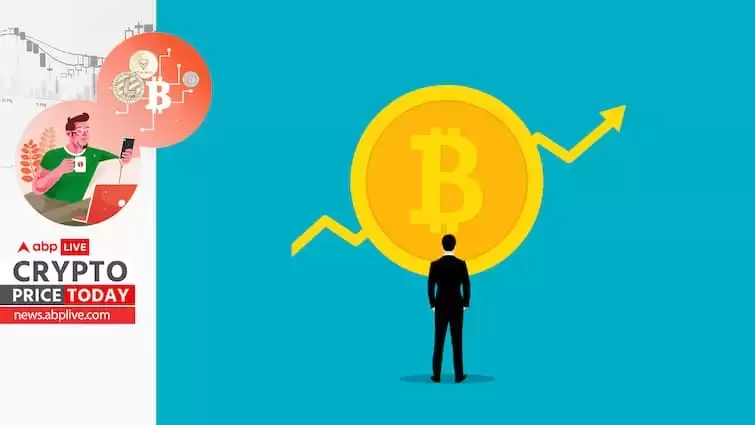 |
|
 |
|
 |
|
 |
|
 |
|
 |
|
 |
|
 |
|
 |
|
 |
|
 |
|
 |
|
 |
|
 |
|
 |
|
Cryptocurrency News Articles
A Major Recent Event in the World of Decentralized Finance (DeFi) Has Led to a Huge Sum of USDe (the DeFi Stablecoin) Being Unstaked
Apr 01, 2025 at 01:11 am
This will evidently lead to some market surprises with analysts, because the annual percentage yield (APY) for USDe stakers has risen sharply during the same time.

A major recent event in the world of decentralized finance (DeFi) has led to a huge sum of USDe- the DeFi stablecoin- being unstaked, in turn bringing about a surprise shift in USDe staking dynamics.
Analyst @tomwanhh reports that 880 million USDe were unstaked over the last four days. This has evidently led to some market surprises with analysts, because the annual percentage yield (APY) for USDe stakers has risen sharply during the same time. From MyToken, the report was shared that the APY now appears to be around 9.2%, where it had previously been around 3.5% just a few days prior.
In the last few days, the most remarkable change has been the rapid decrease in the amount of USDe that was staked on the protocol. In only four days, there were 880 million USDe unstaked, and the staking ratio fell from 58% to 43%. This signifies a considerable drop in the amount of USDe that is being used to secure network operations and earn staking rewards, thereby raising some eyebrows and causing some sea plus over potential liquidity issues and the long-term sustainability of the staking model.
It is interesting to note that even though the amount of USDe that is staked has gone down, the daily APY that is paid to stakers has shot up from 3.5% to 9.2%. This is, of course, a good development for those who are still holding USDe in staking positions, as the rewards are now more than twice as attractive as they were just days ago. But could this rise in APY also mean that something is amiss with the market? Generally speaking, higher yields are a sign that a lot of assets are leaving staking, which could imply reduced confidence in the platform.
However, the bulk of these unstaking activities appear to be linked to large institutional redemptions, with Abraxas Capital taking the center stage in these events. According to data collected by Arkham and shared by a crypto analyst, Abraxas Capital has redeemed a total of 330 million USDe thus far.
These redemptions are part of a broader liquidity event that is unfolding as a consequence of the maturity of Pendle’s sUSDe pool. This pool has been a key instrument in incentivizing users to lock up their USDe in exchange for yields. But with the maturity of these pools comes a period of liquidity events, with large players like Abraxas Capital cashing out significant portions of their positions.
The timing of these massive redemptions seems to be the catalyst for the sudden shift in staking behavior and the subsequent drop in the staking ratio. Moreover, the implications of these extensive liquidations are serious. They might lead to a decrease in the amount of USDe available for use.
If Abraxas Capital continues cashing out its USDe, we’re close to a situation where there might only be 3.something billion USDe usable in the world. That’s less than 4 billion, which some experts see as the floor for how many USDe should be in circulation for the market to work kind of okay and not be super volatile.
While the USDe stablecoin adjusts to these changes, many are left to wonder what they mean for the token’s future. Now that a significant portion of the USDe token is unstaked, will other large players follow suit and start redeeming their held tokens? If this trend continues, the token’s supply could be further reduced, which would impact its price and its overall stability within the DeFi market.
Additionally, the instantaneous spike in APY could draw in new folks wanting to benefit from the higher rewards, yet it might also be a sign of some deep-rooted issues with the protocol’s staking model. A sharp spike in APY is almost always because there’s been a dip in participation, and while it could seem a positive development for those USDe-staking, it might be an indicator that the protocol is having a tough time balancing all the necessary elements to maintain the long-term growth we should be able to expect.
The future of the USDe also may depend on how rapidly Abraxas Capital and other large players decide to redeem their holdings. If these institutional players continue to redeem large amounts, it could lead to a further drop in the staking ratio and an even more pronounced tightening of liquidity in the
Disclaimer:info@kdj.com
The information provided is not trading advice. kdj.com does not assume any responsibility for any investments made based on the information provided in this article. Cryptocurrencies are highly volatile and it is highly recommended that you invest with caution after thorough research!
If you believe that the content used on this website infringes your copyright, please contact us immediately (info@kdj.com) and we will delete it promptly.
-

- Unlike a Few Altcoins, BNB Saw Fewer Drops in the Past Week and Remained Well Above the $600 Level
- Apr 02, 2025 at 03:05 pm
- Last week saw BNB through another downturn after rejecting the $640 level during March's recovery. This caused a small panic as it shed loss, and the price slipped to a low of $587 yesterday.
-

-

-

-

-

-

-

-































































